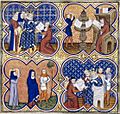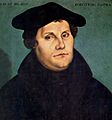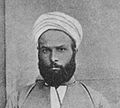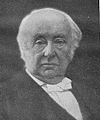Translator facts for kids
A translator is like a language bridge! They take something written or spoken in one language and change it into another language. For example, they might read a book in French and then translate it into English so more people can understand it. This process is called translation.
Translators need to know both languages very well, especially the language they are translating into. Their main job is to make sure the original meaning, feeling, and style of the text are kept in the new language. It's not just about swapping words; it's about understanding the culture and ideas behind the words. That's why many people think translation is more like an art than a science!
Contents
What Does a Translator Do?
A translator's job is to help people communicate across different languages. They work with written materials, like books, websites, documents, or even video game instructions. They make sure that the message is clear and correct for people who speak a different language.
Skills a Translator Needs
To be a great translator, you need more than just knowing two languages. Here are some important skills:
- Deep Language Knowledge: You must understand all the small details, slang, and cultural meanings in both the original language (source) and the new language (target).
- Excellent Writing Skills: Translators need to write clearly and correctly in the target language. The translated text should sound natural, not like it was just put through a machine.
- Cultural Understanding: Languages are tied to cultures. A good translator knows the customs, traditions, and ways of thinking in both cultures to make sure the message is appropriate.
- Research Skills: Sometimes, translators need to look up specific terms, facts, or ideas to make sure their translation is accurate.
- Attention to Detail: Even a small mistake can change the meaning of a sentence, so being careful is very important.
Types of Translation
Translation isn't just one thing; there are different ways people translate.
Written Translation
This is what most people think of when they hear "translator." Written translation involves changing text from one language to another.
- Literary Translation: Translating books, poems, and stories. This often requires a lot of creativity to keep the author's style and voice.
- Technical Translation: Translating manuals, scientific papers, or instructions. This needs very precise language and knowledge of specific topics.
- Website Translation: Making websites available in different languages so people all over the world can use them.
- Legal Translation: Translating contracts, laws, and official documents. This is very serious and needs to be perfectly accurate.
Interpreting (Spoken Translation)
While translators work with written text, interpreters work with spoken language. They listen to someone speak in one language and then immediately translate it orally into another.
- Simultaneous Interpreting: The interpreter translates at the same time as the speaker, often using a headset and microphone in a soundproof booth. This is common at big international meetings.
- Consecutive Interpreting: The speaker talks for a bit, then pauses, and the interpreter translates what was just said. This is often used in smaller meetings, doctor's appointments, or interviews.
Why is Translation Important?
Translation plays a huge role in connecting the world.
- Sharing Knowledge: It allows people to read books, scientific discoveries, and news from other countries.
- Business and Trade: Companies can sell their products and services in different countries when their information is translated.
- Diplomacy and Peace: Leaders from different nations can talk to each other and make agreements thanks to interpreters and translators.
- Understanding Cultures: By reading translated stories and ideas, we can learn about different ways of life and build bridges between people.
- History and Learning: Ancient texts and historical documents can be understood by new generations because they have been translated. A famous example is the Rosetta Stone, which helped us understand ancient Egyptian hieroglyphs.
Images for kids
-
Rosetta Stone, a secular icon for the art of translation
-
Buddhist Diamond Sutra, translated into Chinese by Kumārajīva: world's oldest known dated printed book (868 CE)
-
Mark Twain back-translated his own story, "The Celebrated Jumping Frog of Calaveras County".
-
Hernán Cortés and La Malinche meet Moctezuma II in Tenochtitlan, 8 November 1519.
-
Mistranslation: Michelangelo's horned Moses
-
Chinese translation, verses 33–34 of Quran's surah (chapter) 36
See also
 In Spanish: Traducción para niños
In Spanish: Traducción para niños



























